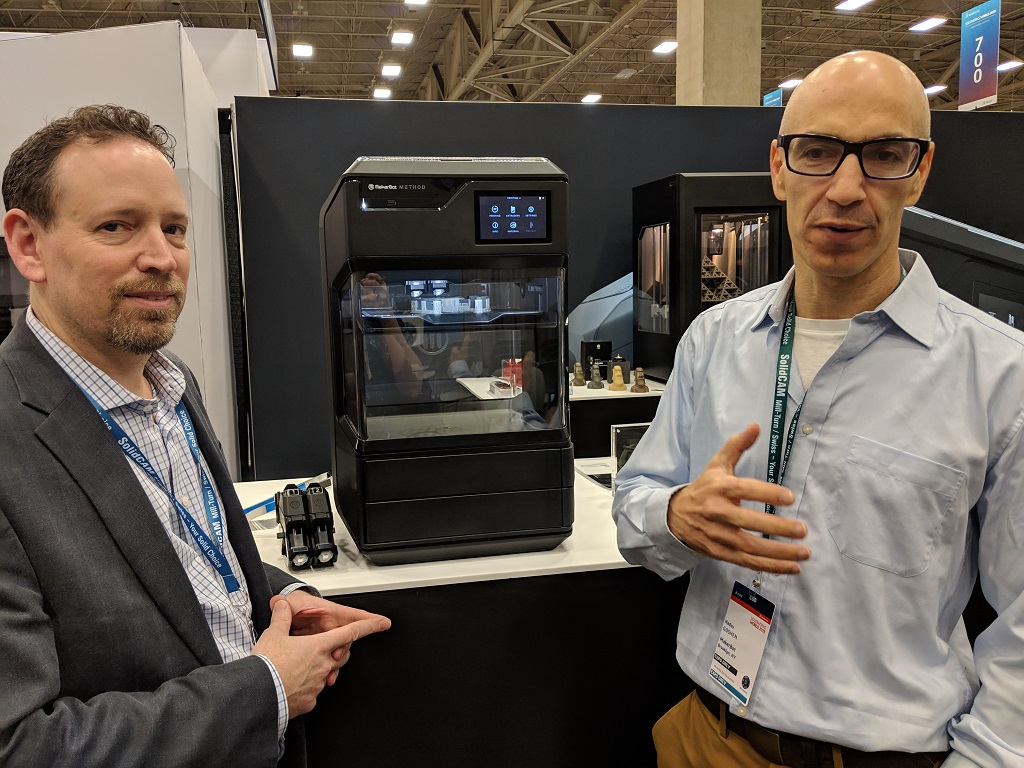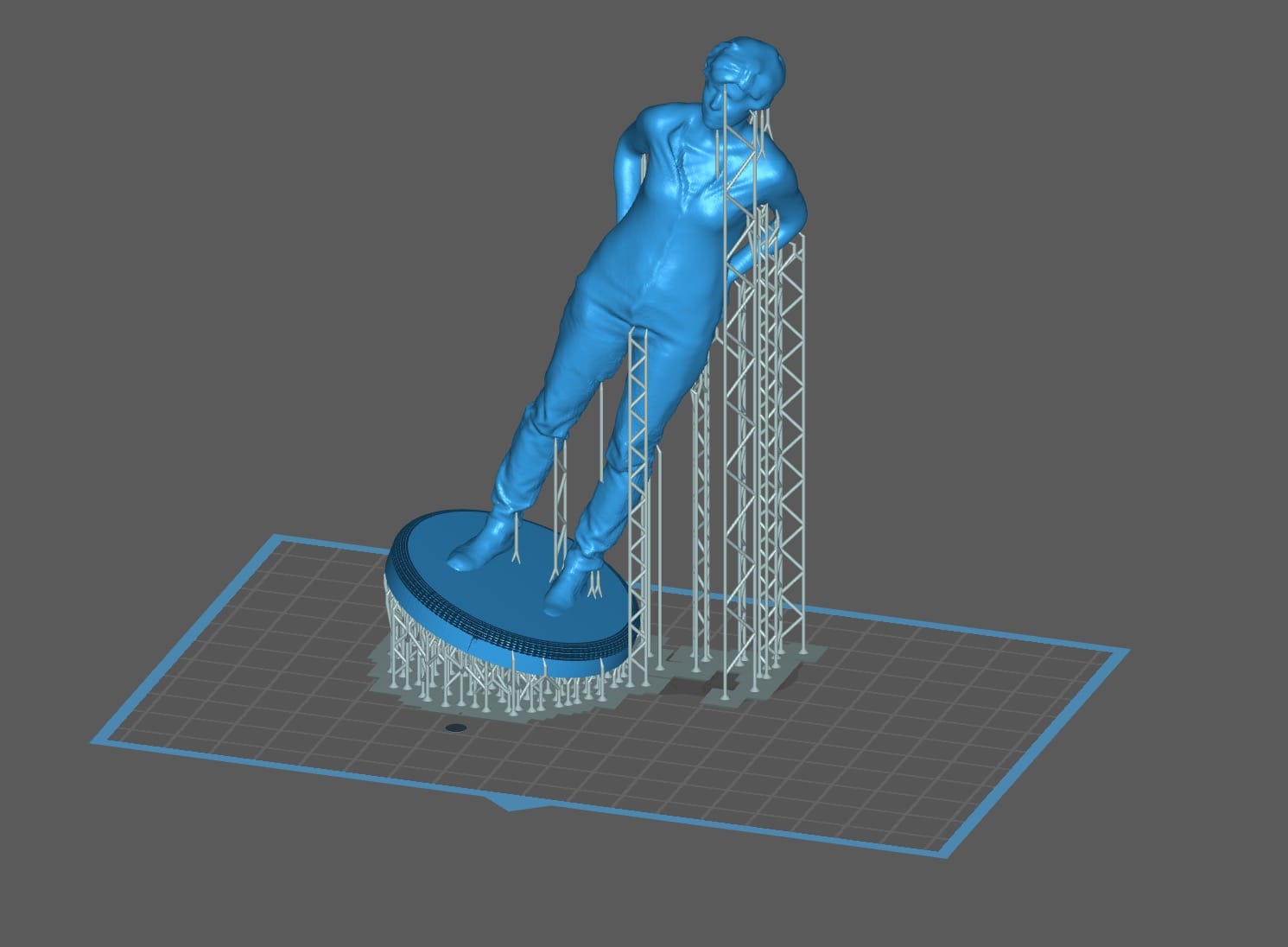![MakerBot’s Forrest Leighton (left) and CEO Nadav Goshen (right) [Image: Fabbaloo]](https://fabbaloo.com/wp-content/uploads/2020/05/IMG_20190212_113440_img_5eb09c728356f.jpg)
The hype of 3D printing focused on the vision; now it’s time to focus on the user and the product.
That’s the story at MakerBot these days, where their new Method is a step toward more accessible professional-quality 3D printing on the desktop. The team behind it is optimistic about the machine’s capabilities and sees it as a validation for the need for higher quality in a small footprint. I caught up recently with MakerBot CEO Nadav Goshen — who filled me in extensively about the Method ahead of its launch — as well as VP of Marketing Forrest Leighton.
“The use case is addressing the challenges of 3D printing accelerating into adoption,” Goshen said as we watched the Method at work. “Tools are not easy to use, and they are not hassle-free. Users find themselves working for the machine instead of the machine working for them.”
Automation, then, is the name of the game. The user experience is streamlined for the Method, which Goshen added was “made to be hands-free without sacrificing precision or dimensional accuracy.”
Importantly, this machine is the first 3D printer MakerBot has designed in full since its acquisition by Stratasys back in 2013. We’ve seen new machines roll out since then, of course, but this is the first ground-up design to be built with full access to Stratasys’ extensive patent portfolio (and with FDM inventor Scott Crump just a phone call away).
![[Image: Fabbaloo]](https://fabbaloo.com/wp-content/uploads/2020/05/00100dPORTRAIT_00100_BURST20190212113528382_COVER_img_5eb09c732b91f.jpg)
The extruders in the Method feature Stratasys technology; Leighton pointed out a gearbox with additional torque that enables “twice the speed you’d see on a desktop 3D printer,” for example.
“There was a lot of hype around 3D printing, and that burst because companies were more focused on their vision than on the product. We as a company are focusing on the customer and the product they need. There are different levels of matureness as a company; if you think only hype and tech, it’s not what the customer really wants from it, that’s not a very good spot to be in,” Goshen told me. “This is the path to success for us.”
That user-first mentality was a happy theme to arise in conversations at SOLIDWORKS World 2019. MakerBot was not the only team to discuss more collaborative relationships with customers and partners — to that end, the Method beta group of about a dozen users is “very active”.
Of course they are still very cognizant of their place in the industry; at the height of the hype, it was MakerBot at the center of desktop 3D printing focus, and they’ve had some well-publicized bumps in the road ever since. Especially with patent expiries opening up FDM to more competition, MakerBot was the target for a lot of newer desktop 3D printer manufacturers. But now the team is showing confidence that they can carve out a new top position. Comparisons to other (unnamed) desktop 3D printers came up several times in discussing the Method’s capabilities. Apples-to-apples prints from the Method and another (unnamed) desktop machine allowed for a side-by-side look at results as far as dimensional accuracy went, with this look at insert capabilities:
![Print off the Method on the left. The question was raised when we shared a look on social media during SWW, so we’ll say that we are taking MakerBot at their word that it was indeed a fully fair apples-to-apples comparison in terms of accurately calibrated machines. [Image: Fabbaloo]](https://fabbaloo.com/wp-content/uploads/2020/05/00000PORTRAIT_00000_BURST20190212115541672_img_5eb09c739b3c9.jpg)
Also physically showing that dimensional accuracy was a two-part print created at different times on different systems. The interlocking pieces have a 50 micron gap and fit together quite nicely indeed:
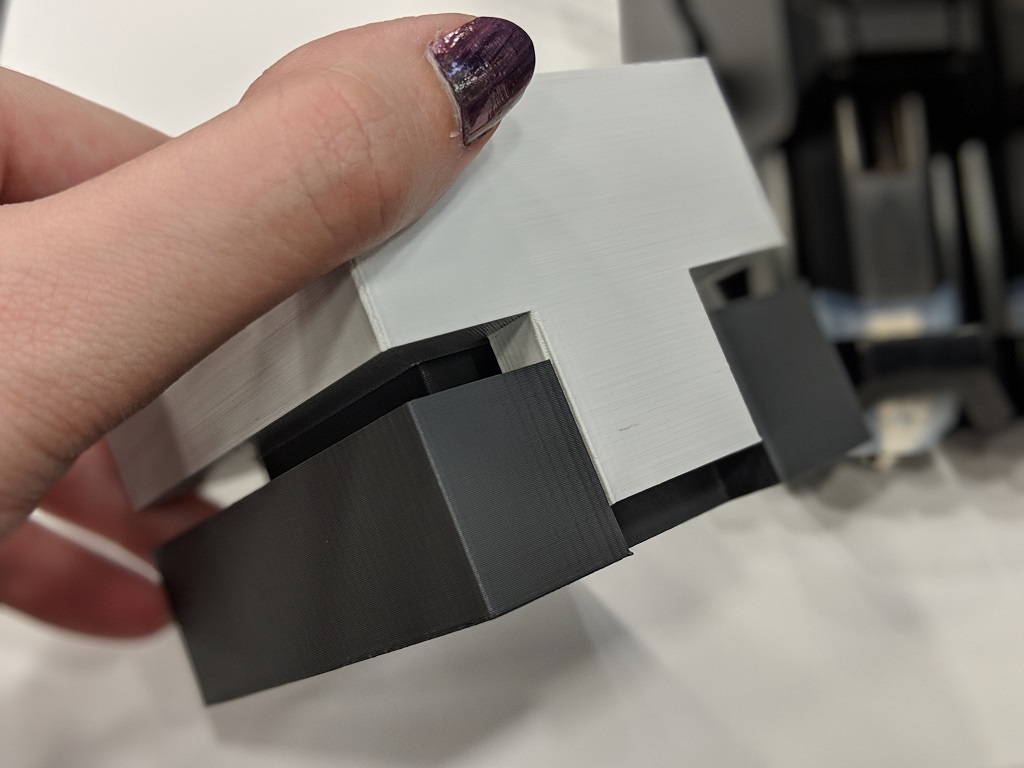
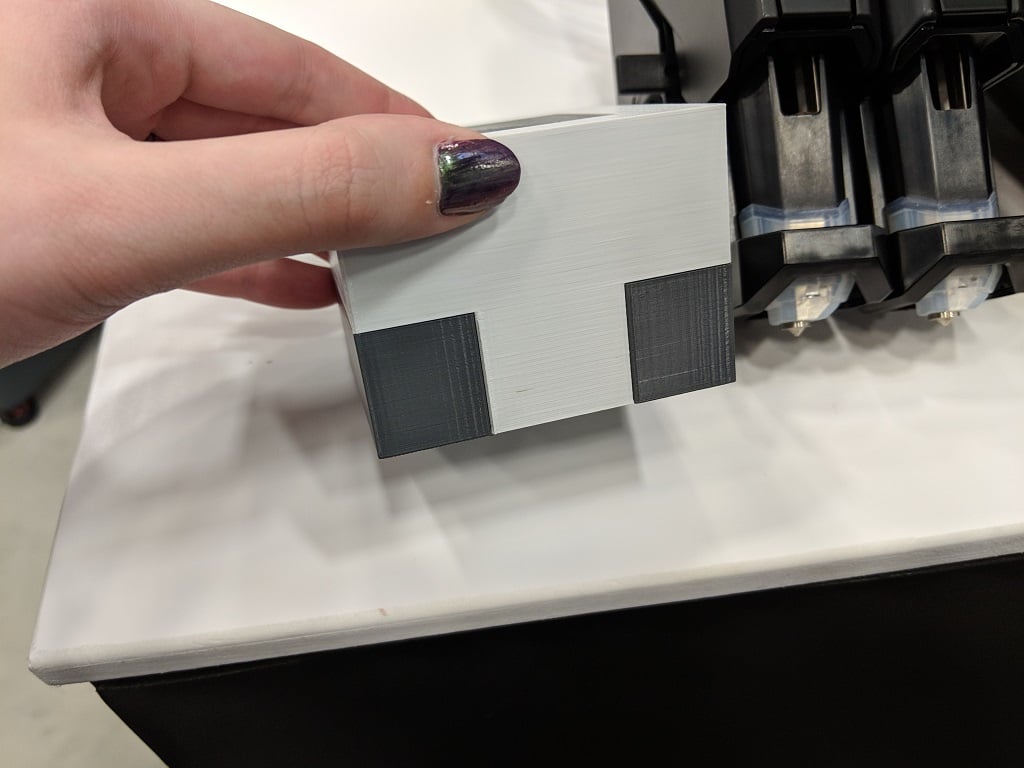
While there were comparisons aplenty, and a functional print (surrounded by soluble supports) taken off the print bed, during our chat, the bulk of our time was spent discussing the whys — and those all came down to the user experience.
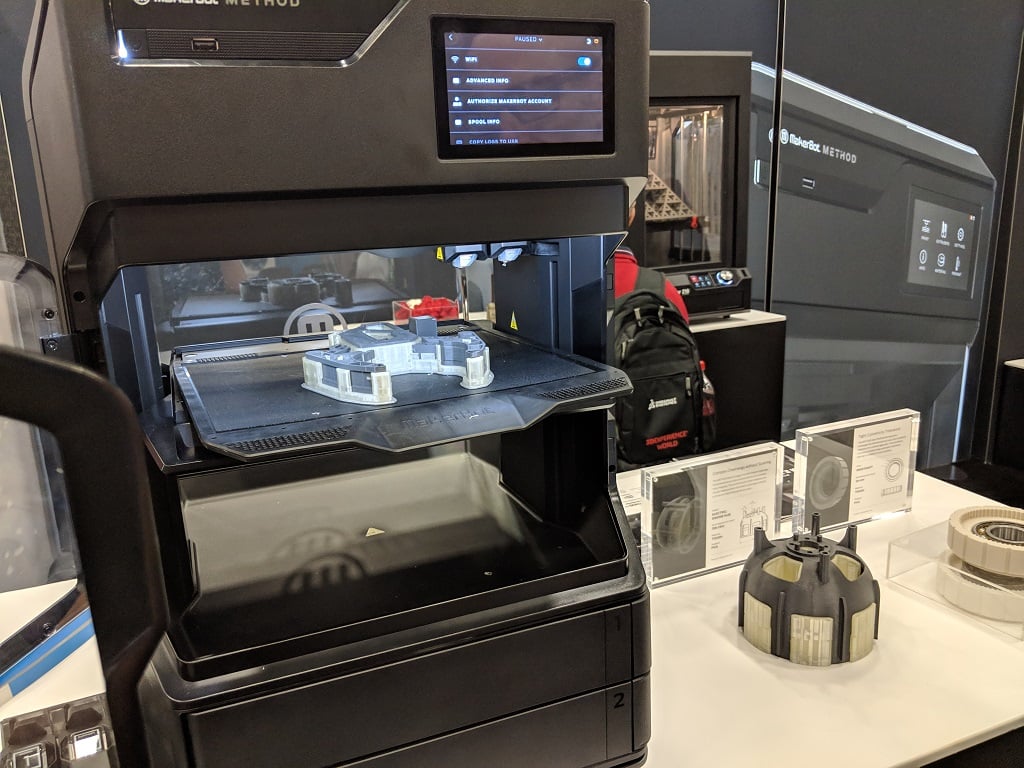
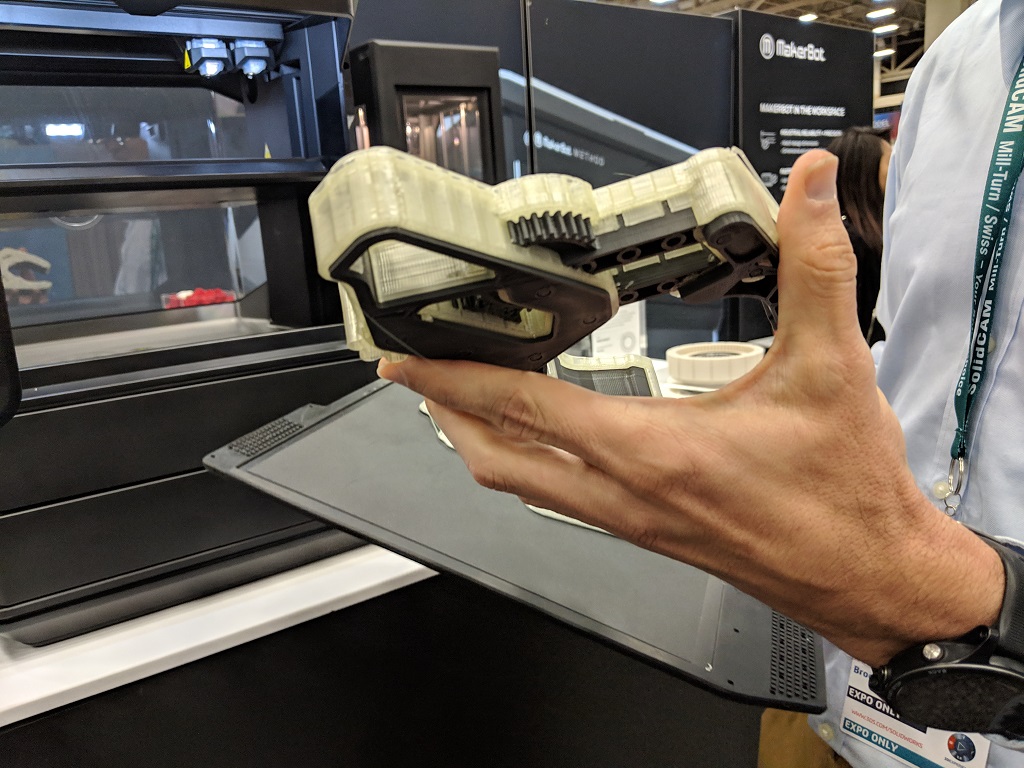
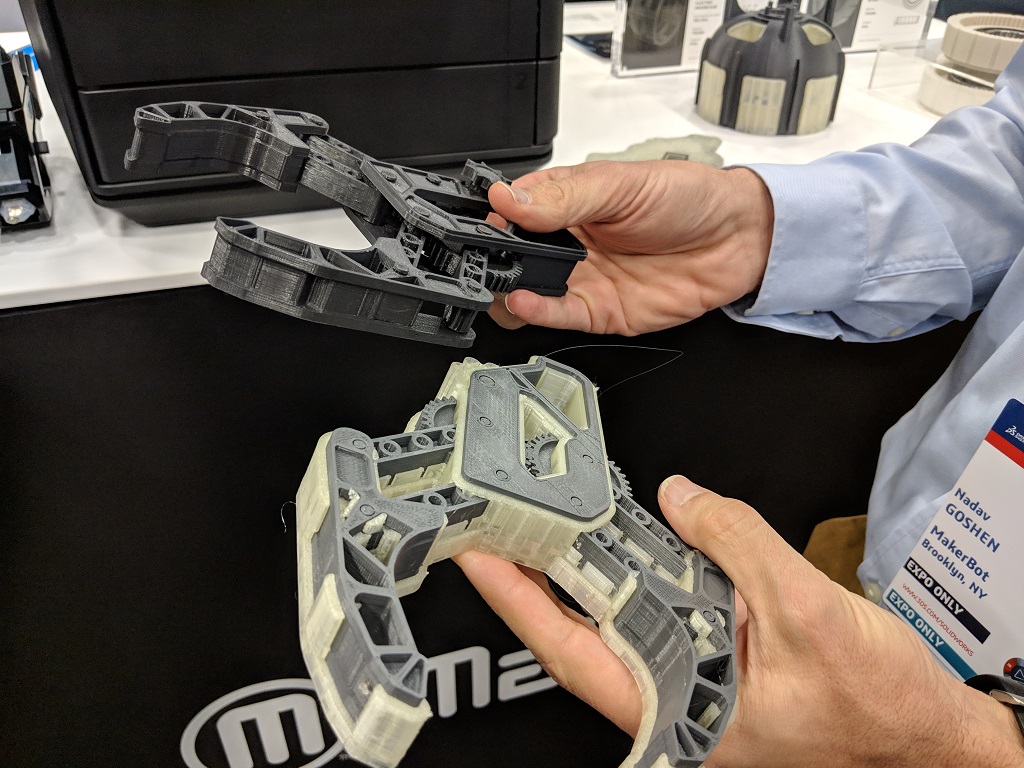
Looking outward toward those actually using the technology is a critical, and too-often unexamined, part of the strategy. We’re hoping to connect soon with some of those beta users to hear how everyday use is going on the ground; we, too, have a user focus.
Via MakerBot

